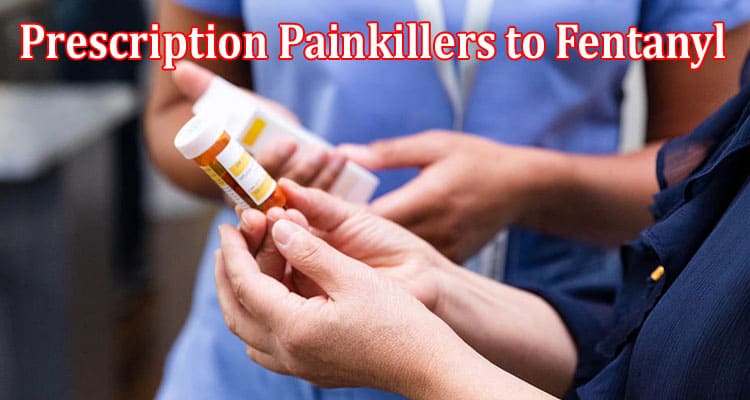The Science Behind Opioid Addiction: From Prescription Painkillers to Fentanyl
Few problems in the fields of medicine and healthcare are as urgent and intricate as the opioid crisis. It’s a topic that affects hundreds and thousands of lives here in Los Angeles and demands people’s attention. From prescription painkillers to the deadly fentanyl, the science behind opioid addiction is both fascinating and deeply concerning. This article will delve into the science of opioid addiction, trace its roots from prescription painkillers to the potent fentanyl, and explore the crucial significance of tailored fentanyl addiction treatment In Los Angeles CA.
Prescription Painkillers
To understand the science of opioid addiction, it’s essential to start at the beginning. It all begins innocently enough for many individuals with a prescription from a trusted healthcare provider. Prescription painkillers, such as oxycodone, hydrocodone, and codeine, are commonly used to alleviate moderate to severe pain. They work by binding to specific receptors in the brain and spinal cord, effectively blocking pain signals.
However, these opioids also trigger a release of dopamine in the brain, creating feelings of euphoria and relaxation. It’s this dopamine rush that makes prescription painkillers not only effective at managing pain but also highly addictive. When taken as prescribed, the risk of addiction is relatively low. But when abused—taken in higher doses or for longer durations than recommended—these drugs can quickly lead to physical and psychological dependence.
The Brain’s Role
The brain plays a pivotal role in the development of opioid addiction. Over time, prolonged opioid use alters the brain’s reward system. It becomes less responsive to natural rewards like food or social interaction while simultaneously amplifying the craving for opioids. This rewiring of the brain reinforces drug-seeking behavior and makes quitting incredibly challenging.
Moreover, the brain develops a tolerance to opioids, meaning that higher doses are needed to achieve the same effects. This can lead to dangerous escalation, as individuals seek higher doses to chase the initial euphoria, putting them at risk of overdose and death.
The Transition to Heroin
As prescription painkiller addiction takes hold, some individuals turn to cheaper and more accessible opioids, such as heroin. Heroin, which is derived from morphine, is an illegal opioid that can be injected, snorted, or smoked. It produces an intense high and binds to the same receptors in the brain as prescription opioids, albeit more potent.
The transition to heroin often occurs because it provides a similar euphoric effect at a lower cost. Unfortunately, this switch introduces even greater risks, as the purity and strength of street drugs like heroin can vary dramatically, increasing the likelihood of overdose.
The Deadly Rise of Fentanyl
In recent years, the opioid crisis has taken an even more sinister turn with the emergence of fentanyl. Fentanyl is a synthetic opioid that is incredibly potent, estimated to be 50 to 100 times more powerful than morphine. Initially developed for medical use, it is now illegally manufactured and sold on the black market.
The danger with fentanyl lies not only in its potency but also in its unpredictability. Tiny amounts can be lethal, and it is often mixed with other drugs like heroin, making it challenging for users to know what they are taking. Fentanyl-related overdoses have surged, contributing significantly to the alarming death toll of the opioid crisis.
Tailored Treatment for Fentanyl Addiction
Given the unique challenges posed by fentanyl addiction, tailored treatment approaches are of paramount importance. Generic addiction treatments that work for other opioids may not be as effective due to fentanyl’s potency and rapid onset.
Fentanyl Addiction Treatment Centers: Specialized treatment centers that focus on fentanyl addiction treatment In Los Angeles CA can provide tailored care and expertise in dealing with this specific challenge. These centers offer a multidisciplinary approach, combining medical supervision, counseling, and peer support to address the unique needs of individuals struggling with fentanyl addiction. Access to these centers can greatly improve recovery outcomes and provide a lifeline for those in crisis.
Medication-Assisted Treatment (MAT): MAT is a widely accepted approach for opioid addiction, and it can be adapted for fentanyl addiction. Medications like buprenorphine and methadone can help reduce cravings and withdrawal symptoms, increasing the chances of recovery.
Comprehensive Support: Fentanyl addiction often requires a comprehensive support system. This includes therapy, counseling, and access to mental health services to address the psychological aspects of addiction.
Education and Prevention: Preventing fentanyl addiction is as crucial as treating it. Public education campaigns about the dangers of fentanyl and its prevalence in street drugs can help individuals make informed decisions.
The Bottom Line
In conclusion, understanding the science behind opioid addiction, from prescription painkillers to lethal fentanyl, is essential to combat the opioid crisis effectively. The brain’s role in addiction, the transition to more dangerous opioids like heroin, and the emergence of fentanyl all contribute to the complexity of this issue. Tailored treatment approaches that take into account fentanyl’s unique characteristics are vital to saving lives and mitigating the devastating impact of opioid addiction on individuals and communities. Everyone must continue to work together to address this crisis, providing support, education, and compassionate care to those affected.




